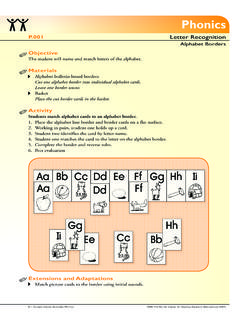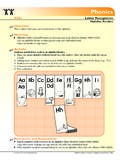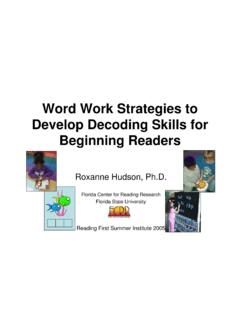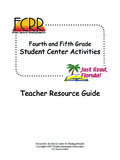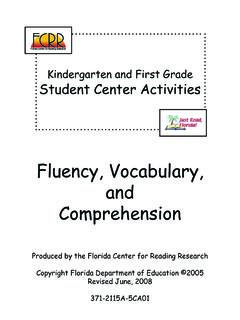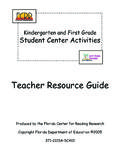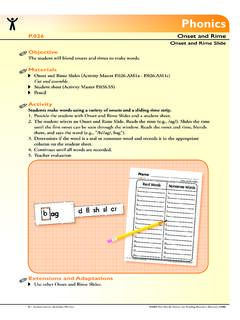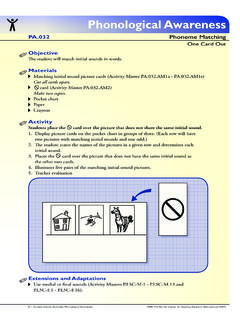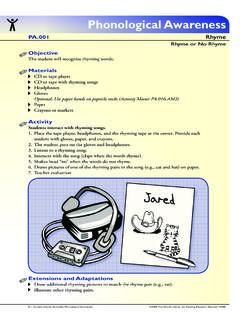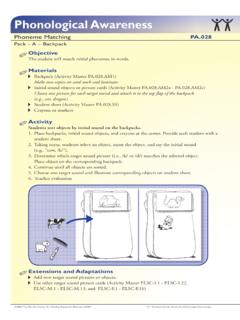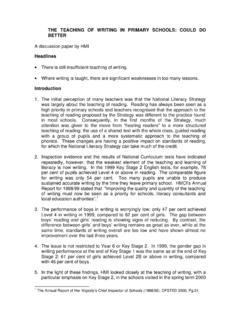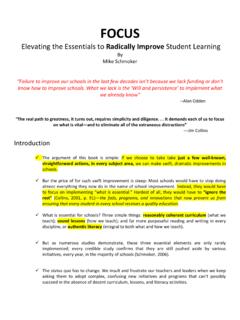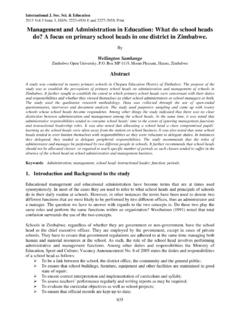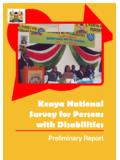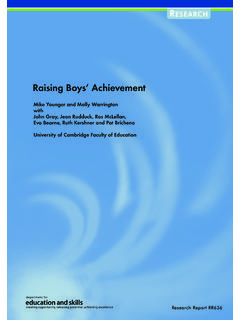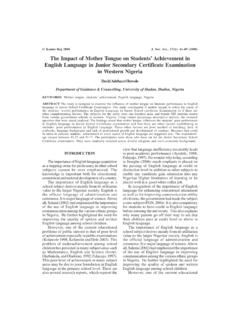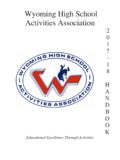Transcription of IMPROVING LITERACY INSTRUCTION IN MIDDLE …
1 IMPROVING LITERACY INSTRUCTION IN MIDDLE AND HIGH SCHOOLS A Guide for PrincipalsJoseph Torgesen, Debra Houston, Lila RissmanFlorida Center for Reading ResearchFlorida State University2007 IMPROVING LITERACY INSTRUCTION IN MIDDLE AND HIGH SCHOOLSA Guide for PrincipalsThis publication was created for the Center on INSTRUCTION bythe Florida Center for Reading Research at Florida StateUniversity. The Center on INSTRUCTION is operated by RMCR esearch Corporation in partnership with the Florida Center for Reading Research at Florida State University; HorizonResearch, Inc.; RG Research Group; the Texas Institute forMeasurement, Evaluation, and Statistics at the University ofHouston; and the Vaughn Gross Center for Reading andLanguage Arts at the University of Texas at contents of this document were developed undercooperative agreement S283B050034 with the of Education.
2 However, these contents do notnecessarily represent the policy of the Department ofEducation, and you should not assume endorsement by theFederal Government. Editorial, design, and production services provided by RMCR esearch citation:Torgesen, J., Houston, D., & Rissman, L. (2007). Improvingliteracy INSTRUCTION in MIDDLE and high schools: A guide , NH: RMC Research Corporation, Center on INSTRUCTION . To download a copy of this document, visit OF CONTENTS1 INTRODUCTION3 THINKING ABOUT LITERACY GOALS5 ELEMENTS OF INSTRUCTION REQUIRED TO MEET THESE GOALS9 CRITICAL ELEMENTS OF A school -LEVEL LITERACY ACTION PLAN21 CONCLUDING COMMENTS23 RECOMMENDATIONS FOR ADDITIONAL READINGINTRODUCTIONIf your goal is to improve reading outcomes for students in your school , thisguide can prompt your thinking about the most critical changes that must bemade.
3 It does not contain all the necessary information, but it will refer you toreadings in specific areas to enrich your knowledge. Think of this document asa quick start guide for a school -level reading initiative. It can point you in theright direction, but it can only provide a taste of the knowledge you will need tobe a successful LITERACY leader in your school . We encourage you to becomefamiliar with the ideas in the guide, then embark on a systematic study toprepare fully for this challenging and rewarding task. This guide is based onscientific research on reading and reading INSTRUCTION and on studies ofsuccessful schools and interviews with successful guide is written for principals of both MIDDLE and high schools. Weacknowledge the often considerable differences in structure and organizationbetween the two educational settings, but note that research suggests strongsimilarities in the essential requirements for high quality support of literacygrowth at both educational levels.
4 Student characteristics in MIDDLE and highschool can also differ substantially, but again, the essential instructionalchallenges for supporting LITERACY growth in these two student populations arehighly similar. We have identified the essential elements of effective readingprograms in both MIDDLE and high schools with the expectation that theseguidelines will always need to be adapted to individual school and the general topic of this guide is LITERACY improvement, its specificfocus is reading. The word literacyencompasses many different forms ofreading and indeed, connotes more than reading skill alone. In this document,we focus on classroom and school -level elements to improve academic LITERACY ,defined as the kind of reading skill students need to be successful in mostcontent-area classrooms.
5 This is also the type of reading skill assessed onstate-level reading accountability examinations. Although writing is also animportant aspect of LITERACY , this document focuses primarily on reading proficiency at the MIDDLE and high school level is usually defined asthe ability to understand and learn from grade-level text. Of course, this is avery complex skill itself, but its most essential elements involve:1 the ability to read text accurately and fluently; enough background knowledge and vocabulary to make sense of thecontent; knowledge and skill in using reading strategies that improve understandingor repair it when it breaks down; the ability to think and reason about the information and concepts in thetext; and motivation to understand and learn from other words, reading proficiency in adolescents requires that students beable to identify the words on the page accurately and fluently;that they haveenough knowledge and thinking abilityto understand the words, sentences andparagraphs.
6 And that they be motivated and engagedenough to use theirknowledge and thinking ability to understand and learn from the text. Weemphasize that motivation to understand and learn from text is a criticalcomponent of reading comprehension for MIDDLE and high school students. Ittakes real effort to understand the many textbooks and other forms of complexwritten materials students encounter in their study of literature, history, socialstudies, science, or mathematics. Unless students are appropriately engaged,they often do not fully apply the skills they have, nor will they be motivated toacquire additional skills and ABOUT LITERACY GOALSAny initiative for improvement needs to be guided by clear goals. Given all thatwe currently know about the way reading skills develop during adolescence, aswell as what we know about the demands for LITERACY once students leaveschool, LITERACY initiatives in MIDDLE and high school should focus on three overall levels of reading succeed in the worldafter school .
7 Adolescents must leave high school with higher levels ofreading proficiency than they are currently that all students make at least expected yearly growth in reading ability each school who enter MIDDLE school reading at grade level need to learn many new skills and acquire extensive knowledge in order to meet grade-level standards at the end of high struggling readers for strugglingreaders must produce substantially more than one year s growth in readingability for each year of INSTRUCTION . Unless struggling readers receiveinstruction this powerful for as long as they need it, their ability to learnfrom grade-level text will remain OF INSTRUCTION REQUIRED TO MEET THESE GOALST here is almost universal agreement that both content-area teachersandreading specialistsmust be involved for schools to successfully meet the goalsoutlined above.
8 Content-area teachers must help students develop theknowledge, reading strategies, and thinking skills to understand and learn fromincreasingly complex text. Reading specialists must provide intensiveinstruction that can skillfully address the wide range of struggling readers needs. As one successful MIDDLE school principal explained,Teachers use reading strategies in all their Scienceteachers have a tremendous science vocabulary program. Vocabularydevelopment is embedded in the content across the curriculum in all classes. Social studies teachers directly teach reading strategies as part of social studies. A successful high school principal observed,Reading INSTRUCTION in the content area is expected of all of ourteachers, whether it be [about] culinary [science] or industrialelectricity.
9 The reading coach has conducted professionaldevelopment with all of our teachers on different reading strategiesand on the importance of in Content-Area ClassesContent-area teachers use many strategies to support their students growth inacademic LITERACY , but current research suggests that students growth inliteracy could be further enhanced by providing more effective INSTRUCTION in thefollowing six ways. This is not an exhaustive list of effective LITERACY -relatedpractices for content-area teachers, but it identifies the research-basedinstructional strategies most frequently discussed in terms of IMPROVING allstudents reading skills. They and supporting practice thatimproves the use of effective reading strategies before, during, and afterreading. Comprehension strategies are behaviors students can consciouslyapply to improve their understanding and learning from for deeper, more sustained discussion ofcontent from text.
10 Extended discussions of text can be facilitated by theteacher, or can occur as structured discussions among students incooperative learning and maintaining high standards for the level oftext, conversation, questions, and vocabulary reflected in discussions andin reading and writing the reading-writingconnection to improve student opportunities to reflect on the meaning oftext and receive feedback on their and more engaging and motivatingclassrooms, and interacting with students in a way that promotes internal motivation for reading. Students will learn to process text moredeeply if their reading is relevant to their lives and they are pursuingmeaningful learning goals in an atmosphere that supports their initiativeand personal content knowledge to ensure learning of themost essential concepts by all students, even those who struggle to readthe textbook.
